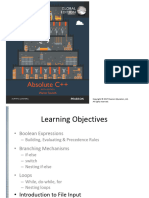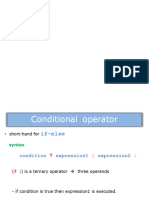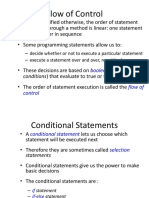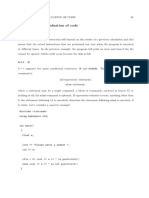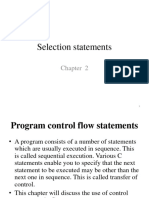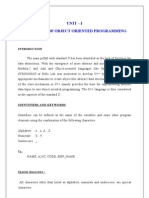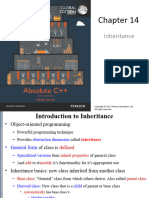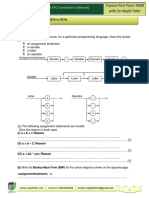0% found this document useful (0 votes)
43 views29 pagesLec2. C++ Flow of Control
The document discusses different types of control flow statements in C++ including conditional statements like if/else and switch statements as well as loops like while, do-while and for loops. It provides syntax examples and explanations of how to use these statements. The document also covers concepts like break and continue in loops as well as nested loops.
Uploaded by
Majd AL KawaasCopyright
© © All Rights Reserved
We take content rights seriously. If you suspect this is your content, claim it here.
Available Formats
Download as PPTX, PDF, TXT or read online on Scribd
0% found this document useful (0 votes)
43 views29 pagesLec2. C++ Flow of Control
The document discusses different types of control flow statements in C++ including conditional statements like if/else and switch statements as well as loops like while, do-while and for loops. It provides syntax examples and explanations of how to use these statements. The document also covers concepts like break and continue in loops as well as nested loops.
Uploaded by
Majd AL KawaasCopyright
© © All Rights Reserved
We take content rights seriously. If you suspect this is your content, claim it here.
Available Formats
Download as PPTX, PDF, TXT or read online on Scribd
/ 29

